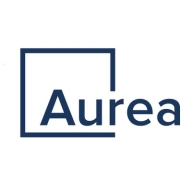

Actional and Grafana are both powerful tools in their respective fields. Based on user reviews, Grafana generally stands out with a broader range of features and better overall user satisfaction.
What features are offered by Actional in comparison to Grafana?Actional's valuable features include real-time monitoring, advanced analytics, and integration capabilities. Grafana offers customizable dashboards, extensive visualization options, and strong filtering capabilities. Users tend to favor Grafana's flexibility and visualization features more.
What areas of improvement can be found in Actional in comparison to Grafana?Actional users suggest enhancements in integration capabilities, better documentation, and more intuitive user interface. Grafana users seek improvements in notification systems, initial setup complexity, and scalability. Both products have distinct areas for growth, but Grafana needs more refinement in simplifying the user experience.
How is the ease of deployment and customer service of Actional in comparison to Grafana?Actional's deployment is straightforward with strong customer support. Grafana, while also easy to deploy, sometimes presents challenges that require more technical knowledge. However, Grafana's customer service is highly rated. Grafana offers a satisfactory deployment experience with excellent support, slightly higher than Actional.
What setup costs and ROI can be seen with Actional in comparison to Grafana?Actional offers competitive pricing with decent ROI. Users believe Grafana provides better value despite potentially higher costs due to its superior features and flexibility. Grafana users report higher satisfaction with the overall investment return.

Grafana is an open-source visualization and analytics platform that stands out in the field of monitoring solutions. Grafana is widely recognized for its powerful, easy-to-set-up dashboards and visualizations. Grafana supports integration with a wide array of data sources and tools, including Prometheus, InfluxDB, MySQL, Splunk, and Elasticsearch, enhancing its versatility. Grafana has open-source and cloud options; the open-source version is a good choice for organizations with the resources to manage their infrastructure and want more control over their deployment. The cloud service is a good choice if you want a fully managed solution that is easy to start with and scale.
A key strength of Grafana lies in its ability to explore, visualize, query, and alert on the collected data through operational dashboards. These dashboards are highly customizable and visually appealing, making them a valuable asset for data analysis, performance tracking, trend spotting, and detecting irregularities.
Grafana provides both an open-source solution with an active community and Grafana Cloud, a fully managed and composable observability offering that packages together metrics, logs, and traces with Grafana. The open-source version is licensed under the Affero General Public License version 3.0 (AGPLv3), being free and unlimited. Grafana Cloud and Grafana Enterprise are available for more advanced needs, catering to a wider range of organizational requirements. Grafana offers options for self-managed backend systems or fully managed services via Grafana Cloud. Grafana Cloud extends observability with a wide range of solutions for infrastructure monitoring, IRM, load testing, Kubernetes monitoring, continuous profiling, frontend observability, and more.
The Grafana users we interviewed generally appreciate Grafana's ability to connect with various data sources, its straightforward usability, and its integration capabilities, especially in developer-oriented environments. The platform is noted for its practical alert configurations, ticketing backend integration, and as a powerful tool for developing dashboards. However, some users find a learning curve in the initial setup and mention the need for time investment to customize and leverage Grafana effectively. There are also calls for clearer documentation and simplification of notification alert templates.
In summary, Grafana is a comprehensive solution for data visualization and monitoring, widely used across industries for its versatility, ease of use, and extensive integration options. It suits organizations seeking a customizable and scalable platform for visualizing time-series data from diverse sources. However, users should be prepared for some complexity in setup and customization and may need to invest time in learning and tailoring the system to their specific needs.
We monitor all Application Performance Monitoring (APM) and Observability reviews to prevent fraudulent reviews and keep review quality high. We do not post reviews by company employees or direct competitors. We validate each review for authenticity via cross-reference with LinkedIn, and personal follow-up with the reviewer when necessary.